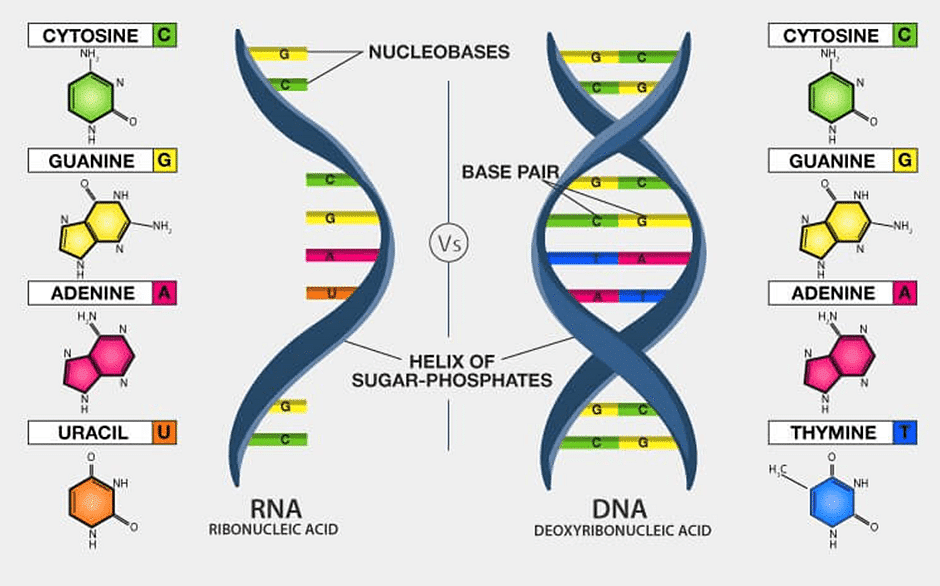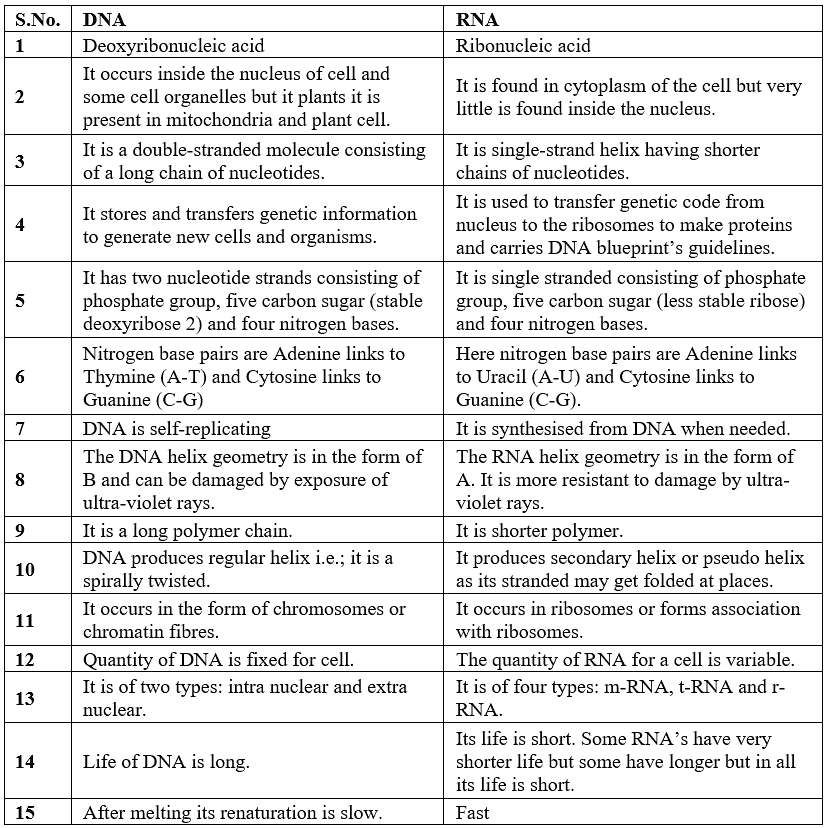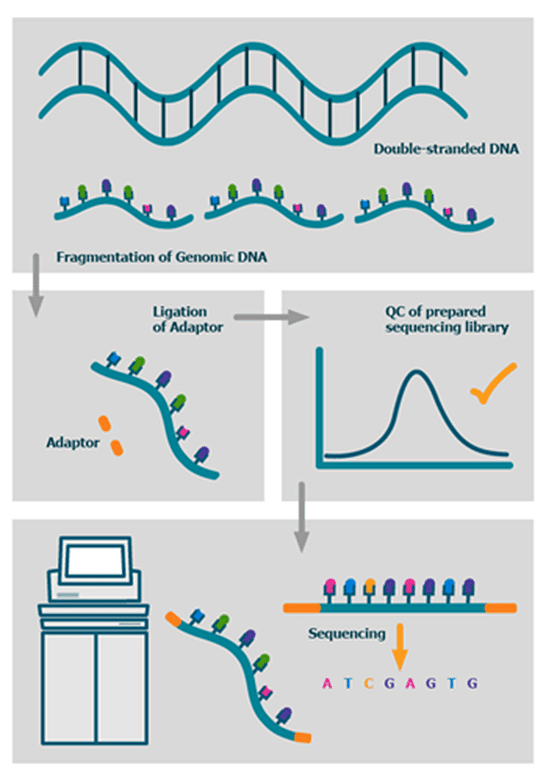Introduction to Biotechnology | IBPS PO Prelims & Mains Preparation - Bank Exams PDF Download
Biotechnology and its Applications
Biotechnology is the field that exploits living organisms to make technological advances in various fields for the sustainable development of mankind.
The European federation of biotechnology defines it as “The integration of natural science and organisms, cells, parts thereof and molecular analogues for products and services”.
Biotechnology is the use of an organism, or a component of an organism or other biological system, to make a product or process for a specific use.
It can include both cutting-edge laboratory techniques and traditional agricultural and culinary techniques that have been practiced for hundreds of years.
Brewing and baking bread are examples of processes that fall within the concept of biotechnology (use of yeast (= living organism) to produce the desired product).
- Such traditional processes usually utilize the living organisms in their natural form (or further developed by breeding), while the more modern form of biotechnology will generally involve a more advanced modification of the biological system or organism.
With the development of genetic engineering in the 1970s, research in biotechnology (and other related areas such as medicine, biology etc.) developed rapidly because of the new possibility to make changes in the organisms’ genetic material (DNA).
Biotechnology deals with industrial scale production of biopharmaceuticals and biologicals using genetically modified microbes, fungi, plants and animals. The applications of biotechnology include therapeutics, diagnostics, genetically modified crops for agriculture, processed food, bioremediation, waste treatment, and energy production.
Beer brewing: In beer brewing, tiny fungi (yeasts) are introduced into a solution of malted barley sugar, which they busily metabolize through a process called fermentation. The byproduct of the fermentation is the alcohol that’s found in beer. Here, we see an organism – the yeast – being used to make a product for human consumption.
Penicillin: The antibiotic penicillin is generated by certain molds. To make small amounts of penicillin for use in early clinical trials, researchers had to grow up to 500 liters of “mold juice” a week. Here, an organism (mold) was used to make a product for human use – in this case, an antibiotic to treat bacterial infections.
IVF, or in vitro fertilization, is a technique used to help a woman get pregnant. It is when a human egg is fertilised with sperm in a laboratory. IVF is used to treat infertility and some genetic problems.
Gene therapy: Gene therapy is an emerging technique used to treat genetic disorders that are caused by a nonfunctional gene. It works by delivering the “missing” gene’s DNA to the cells of the body.
- In gene therapy, biological components from different sources (a gene from humans, a plasmid originally from bacteria) are combined to make a new product.
Tissue culture, a method of biological research in which fragments of tissue from an animal or plant are transferred to an artificial environment in which they can continue to survive and function.
Biotechnology has additional applications in areas such as food production and the remediation (cleanup) of environmental pollution.
Principles of Biotechnology
Genetic Engineering: Techniques to alter the chemistry of genetic materials (DNA and RNA) and to introduce these into host organisms and thus change the phenotype(observable physical properties of an organism) of host organisms.
Maintenance of Sterile (microbial contamination free) ambiance in chemical engineering processes to enable the growth of only desired microbe/eukaryotic cell in large quantities for the manufacture of biotechnological products like antibiotics, vaccines, enzymes, etc.
Genetic Engineering
Genetic Engineering is a technique of manipulating the genome of the organism, to add one or more trait that is not found in organism naturally. Also, called gene manipulation /genetic modification.
Techniques
- Isolation of genes: Desirable sequence of genes is obtained directly from the genome of normal cells or from other cells, which is achieved by cleavage and denaturation. DNA is extracted from cells.
- Synthesis of genes: Various methods are deployed for the same.
- Recombinant DNA: Cutting of DNA molecule at a desired position results in a new gene product which is called as recombinant DNA (r-DNA). The receiving organism is said to be transgenic. Using this technique, we can isolate and clone a single copy of a gene or DNA molecule into an indefinite number of copies all identical.
- Gene cloning: Isolation of gene and reproduction of a single copy of gene or DNA segment into the infinite number of copies all identical is known as gene cloning.
Hazards of Genetic Engineering
- If a wrong DNA segment is inserted and it gets expressed, it can cause new diseases in human beings.
- It can be used in biological warfare.
- Genetical modification of existing species/recreation of extinct species can cause disaster.
- New strains of bacteria/fauna can come out of the lab which can be hostile to human beings.
- Even in a single species, genetic engineering leads to the elimination of varieties – if some new disease comes up, the entire species may be wiped out.
National Genomic Grid
- Health Minister announced plans of Genomic grid for India-specific cancer research.
- In a move to take cancer research to the next level and make treatment viable for people of different economic classes, the government has plans to set up a National Genomic Grid, which will study genomic data of cancer patients from India.
- The grid to be formed will be in line with the National Cancer Tissue Biobank (NCTB) set up at the Indian Institute of Technology, Madras, and will collect samples from cancer patients to study genomic factors influencing cancer and identifying the right treatment modalities for the Indian population.
- The government plans to set up the National Genomic Grid in the same style with pan-India collection centers by bringing all cancer treatment institutions on board.
- The grid will have four parts, with the country divided into east, west, north, and south.
National Cancer Tissue Biobank (NCTB)
- It is a joint initiative of the Department of Science and Technology (DST), Government of India, and Indian Institute of Technology, Madras.
- The NCTB is functioning in close association with the Indian Council for Medical Research (ICMR).
- NCTB, which has the capacity to stock 50,000 genomic samples from cancer patients, already has samples from 3,000 patients. The genomic samples will help researchers to have India-specific studies on cancers.
DNA and RNA
- DNA contains the sugar deoxyribose, while RNA contains the sugar ribose. The only difference between ribose and deoxyribose is that ribose has one more -OH group than deoxyribose, which has -H attached to the second (2′) carbon in the ring.
- DNA is a double-stranded molecule while RNA is a single-stranded molecule.
- DNA is stable under alkaline conditions while RNA is not stable.
- DNA and RNA perform different functions in humans. DNA is responsible for storing and transferring genetic information while RNA directly codes for amino acids and as acts as a messenger between DNA and ribosomes to make proteins.
- DNA and RNA base pairing is slightly different since DNA uses the bases adenine, thymine, cytosine, and guanine; RNA uses adenine, uracil, cytosine, and guanine. Uracil differs from thymine in that it lacks a methyl group on its ring.
 DNA vs RNA
DNA vs RNA
Comparison of DNA and RNA

Biological Functions of Nucleic Acids – DNA and RNA
- DNA is the chemical basis of heredity and may be regarded as the reserve of genetic information.
- DNA is exclusively responsible for maintaining the identity of different species of organisms over millions of years.
- A DNA molecule is capable of self-duplication during cell division and identical DNA strands are transferred to daughter cells.
- Another important function of nucleic acids is the protein synthesis in the cell. Actually, the proteins are synthesized by various RNA molecules in the cell but the message for the synthesis of a particular protein is present in DNA.
DNA Fingerprinting
- It is known that every individual has unique fingerprints. These occur at the tips of the fingers and have been used for identification for a long time but these can be altered by surgery.
- A sequence of bases on DNA is also unique for a person and information regarding this is called DNA fingerprinting. It is the same for every cell and cannot be altered by any known treatment.
- DNA fingerprinting is now used–
- in forensic laboratories for the identification of criminals.
- to determine the paternity of an individual.
- to identify the dead bodies in any accident by comparing the DNA’s of parents or children.
- to identify racial groups to rewrite biological evolution.
Recombinant DNA
- In 1953, scientists discovered the structure of DNA, and in 1972, researchers developed a method for cutting and splicing DNA. That method became known as recombinant DNA or rDNA.
- Recombinant DNA (rDNA) molecules are DNA molecules formed by laboratory methods of genetic recombination (such as molecular cloning) to bring together genetic material from multiple sources, creating sequences that would not otherwise be found in the genome.
- Recombinant DNA is possible because DNA molecules from all organisms share the same chemical structure. They differ only in the nucleotide sequence within that identical overall structure.
- In most cases, organisms containing recombinant DNA have apparently normal phenotypes(observable physical properties of an organism), That is, their appearance, behaviour, and metabolism are usually unchanged.
 DNA Recombination
DNA Recombination
The basic steps involved in Recombinant DNA Technology
- Isolation of a DNA fragment containing a gene of interest that needs to be cloned (called as insert).
- Generation of a recombinant DNA (rDNA) molecule by insertion of the DNA fragment into a carrier DNA molecule called vector (e.g. plasmid) that can self-replicate within a host cell.
- Transfer of the rDNA into an E. coli host cell (a process called transformation).
- Selection of only those host cells carrying the rDNA and allowing them to multiply thereby multiplying the rDNA molecules.
- The whole process thus can generate either a large amount of rDNA (gene cloning) or a large amount of protein expressed by the insert.
- The first rDNA molecules to be generated using these procedures were established by the combined efforts in 1973 by the molecular biologists’ Paul Berg, Herbert Boyer, Annie Chang, and Stanley Cohen.
- The next step after a recombinant molecule has been generated is to introduce it into a suitable host.
- There are many methods to introduce recombinant vectors and these are dependent on several factors such as the vector type and host cell.
Some commonly used procedures are
- Transformation
- Transfection
- Electroporation
- Microinjection: In the procedure of microinjection, foreign DNA is directly injected into recipient cells using a fine microsyringe under a phase-contrast microscope to aid vision.
- Biolistics: A remarkable method that has been developed to introduce foreign DNA into mainly plant cells is by using a gene or particle gun. Microscopic particles of gold or tungsten are coated with the DNA of interest and bombarded onto cells with a device much like a particle gun. Hence the term biolistics is used.
Applications of recombinant DNA technology
- Recombinant DNA is widely used in biotechnology, medicine, and research.
- Recombinant DNA is used to identify, map, and sequence genes, and to determine their function.
Recombinant DNA is Used to Produce
- Human Insulin: Recombinant insulin is cheaper and easier when compared to insulin obtained from animal sources.
- Human growth hormone: For patients with pituitary glands generating an insufficient quantity of hormone for normal growth, this was a boon
- Blood clotting factor VIII: To help patients suffering from haemophilia.
- Herbicide and Insect-resistant crops: Commercial varieties like soya, sorghum, cotton have been developed. Such varieties integrate a recombinant gene that causes the resistance to herbicide glyph sate application
- Bacillus Thuringeinsis: is the name of the bacterium that naturally produces a protein with insecticidal properties.
DNA Profiling
- Modern-day DNA profiling is also called STR analysis and relies on microsatellites rather than the minisatellites used in DNA fingerprinting.
- Microsatellites, or short tandem repeats (STRs), are the shorter relatives of minisatellites usually two to five base pairs long. Like minisatellites, they are repeated many times throughout the human genome, for example, ‘TATATATATATA’.
DNA Sequencing
- In this era of genomics wherein, whole genomes of species are being sequenced and compared to get a vision into the fundamental nature of DNA, the blueprint of life, the ease with which DNA is sequenced has played a major role.
- The first methods for sequencing DNA were developed in the middle 1970s by Fred Sanger, and by Walter Gilbert and Allan Maxam.
- Subsequently, Sanger developed a new method that forms the basis of most DNA sequencing today.
- Sequencing DNA means determining the order of the four chemical building blocks – called “bases” – that make up the DNA molecule.
- The sequence tells scientists the kind of genetic information that is carried in a particular DNA segment.
Benefits of DNA Sequencing
- Forensics: To identify a particular individual because every individual has a unique sequence of DNA.
- Determine the Paternity of the child
- Medicine: Used to detect the genes which are associated with some heredity or acquired diseases. As almost all organisms have some kind of genetic material we can understand the causes of all human diseases.
- Agriculture: Specific genes of bacteria have been used to make crops resistant against insects and pests. It is also useful in the production of livestock with improved quality of meat and milk.
DNA Bar-Coding
Characterizing species of organisms using a short DNA sequence from a standard and agreed-upon position from the genome.
Application
- Identification of plant leaves even in absence of fruit
- Identification of insect larvae
- Identification of products in commerce
Criticism
- Lack of reliable information above the species level
- Gross oversimplification of the science of taxonomy.
Genome Sequencing
Genome Sequencing is a laboratory process through which scientists get the complex DNA sequence (in terms of A,T,G,C) of an organism’s genome at a time. DNA containing cells such as saliva, epithelial cells, bone marrow, hair, seeds, and plant leaves are used as samples for sequencing. Genome Sequencing
Genome Sequencing
|
541 videos|683 docs|263 tests
|
FAQs on Introduction to Biotechnology - IBPS PO Prelims & Mains Preparation - Bank Exams
| 1. What is biotechnology? |  |
| 2. What are the applications of biotechnology? |  |
| 3. How is biotechnology used in medicine? |  |
| 4. What are the ethical concerns associated with biotechnology? |  |
| 5. What are the environmental applications of biotechnology? |  |
|
541 videos|683 docs|263 tests
|

|
Explore Courses for Bank Exams exam
|

|


















